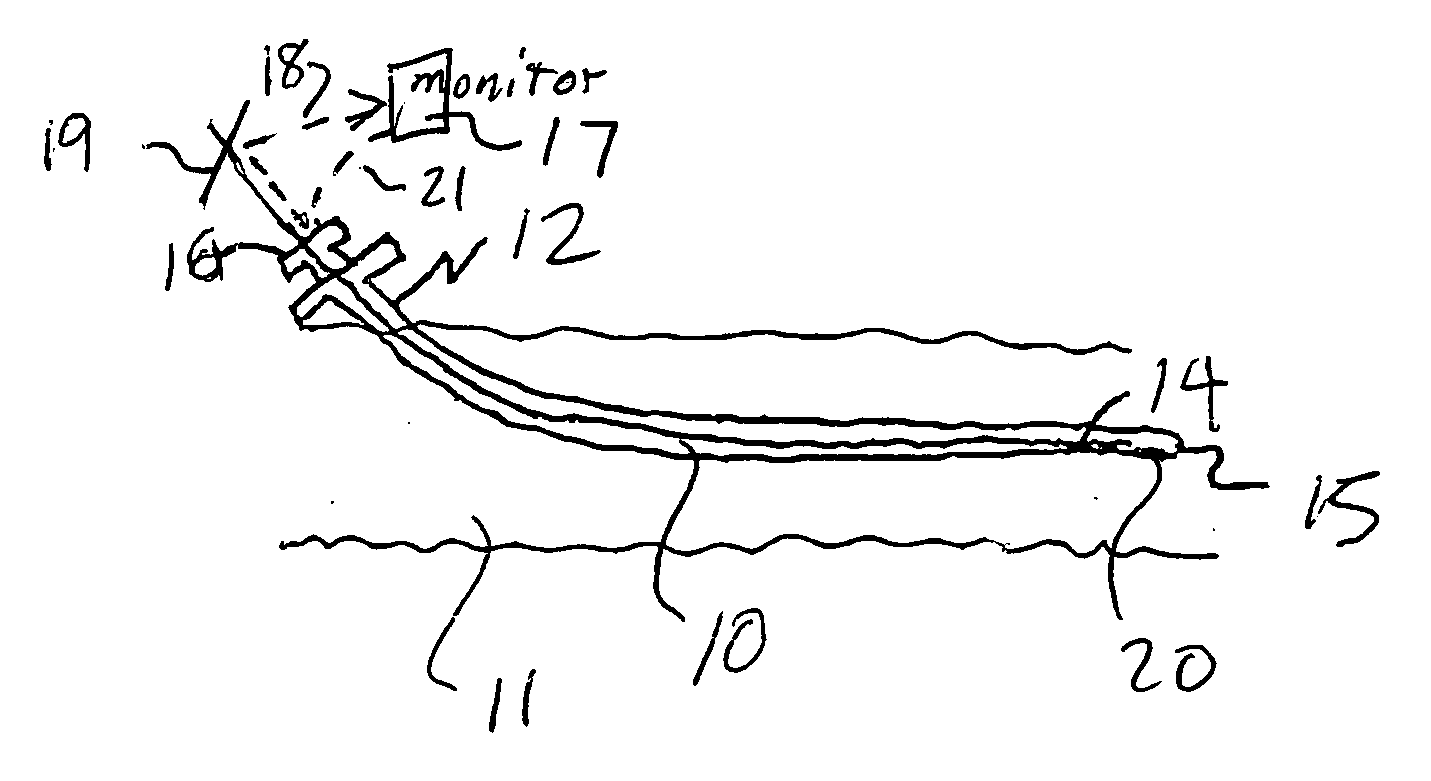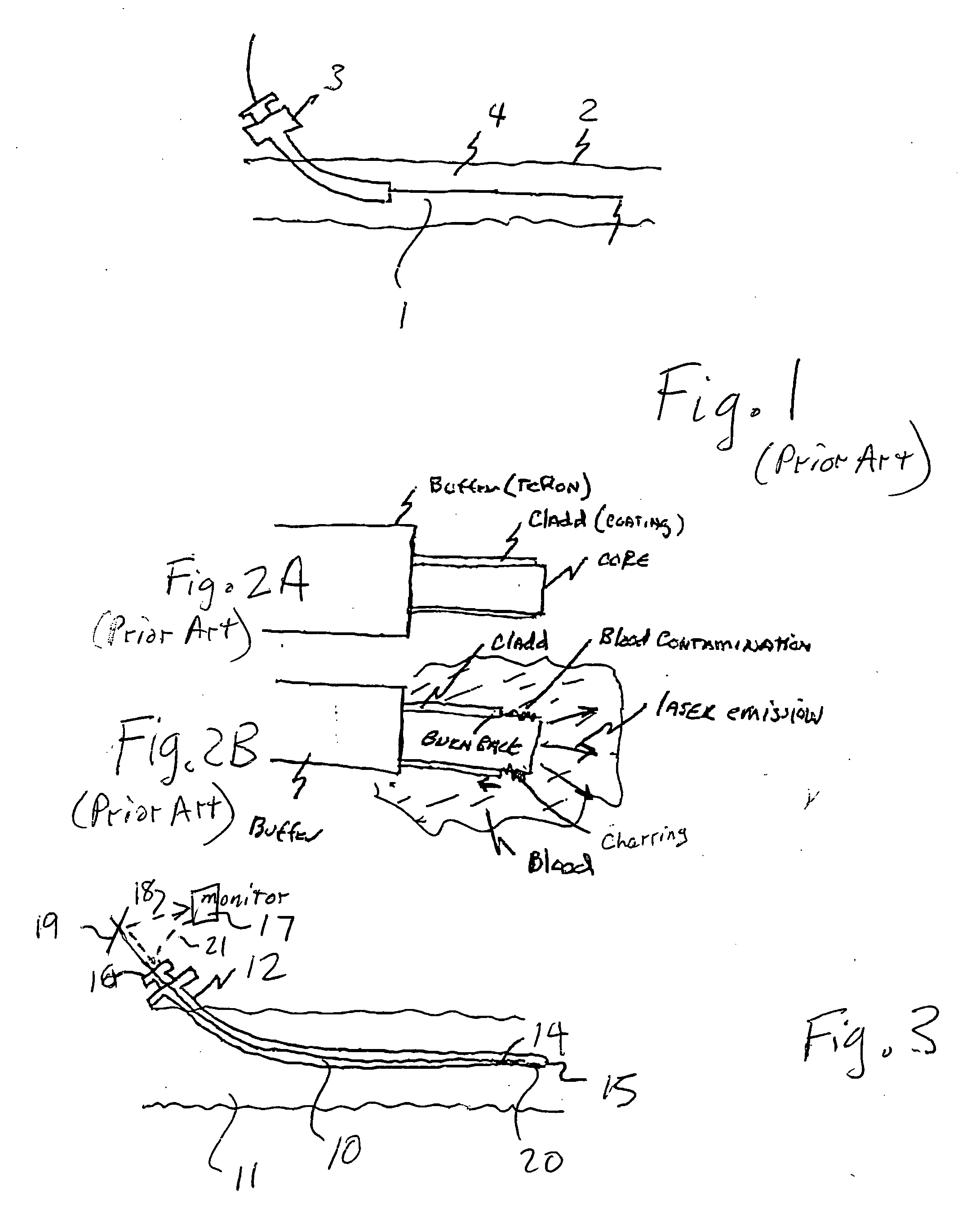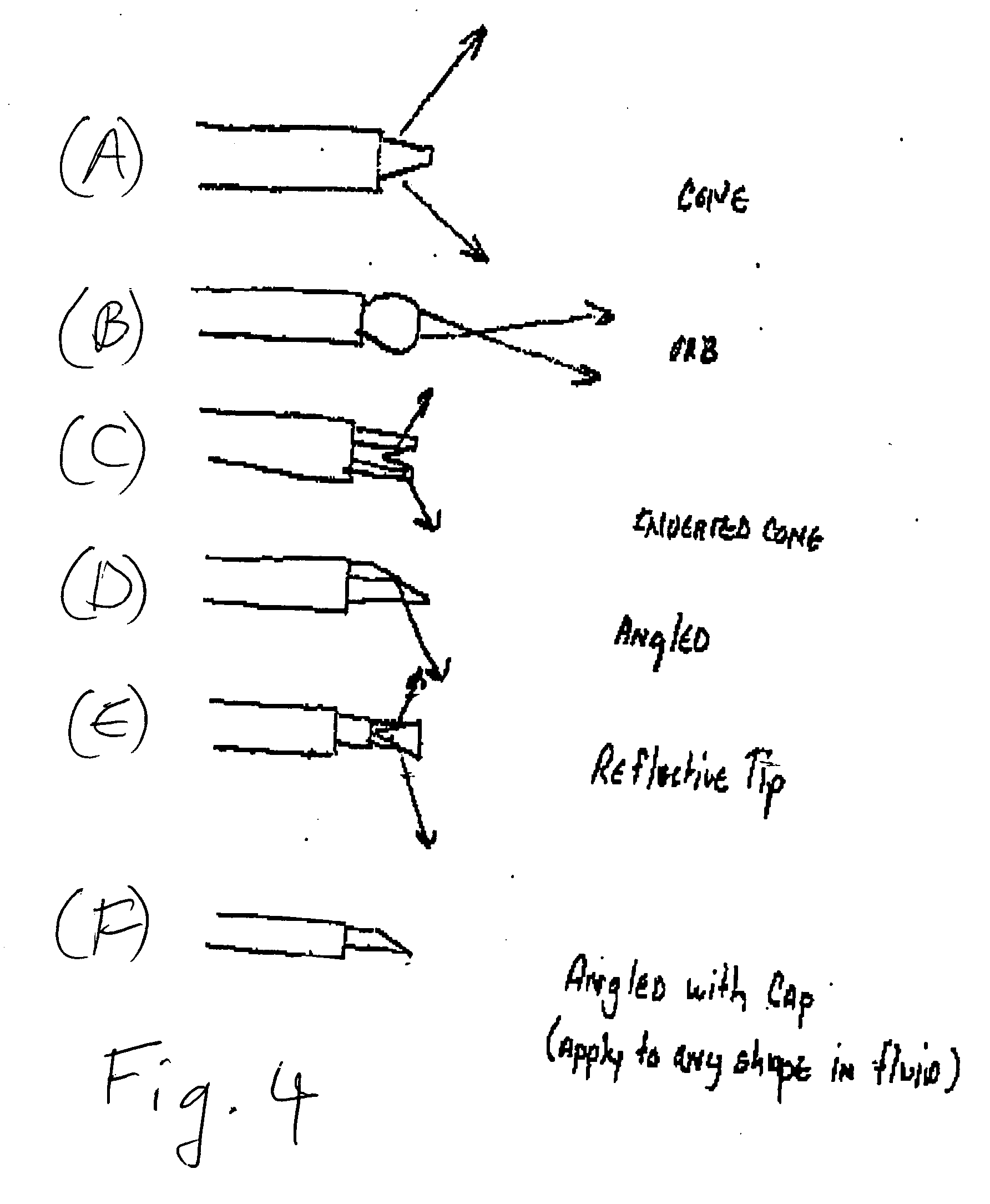Endovascular method and apparatus with electrical feedback
a technology of endovascular and electrical feedback, applied in the field of endovascular apparatus with electrical feedback, can solve the problems of overheating and burnback of cladding and other buffer materials on the fiber tip, weakened fiber integrity, and continued lamination, so as to prevent burn back
- Summary
- Abstract
- Description
- Claims
- Application Information
AI Technical Summary
Benefits of technology
Problems solved by technology
Method used
Image
Examples
Embodiment Construction
[0027] As illustrated in FIG. 3, the apparatus of a preferred embodiment of the invention includes an energy delivery device in the form of an optical fiber 10 that is introduced into the vessel 11 by means of a Teflon_ introducer 12. The Teflon introducer lacks a homeostasis valve and has a closed end 13 that extends beyond the tip 14 of the fiber 10 and that has an end 15 arranged to prevent contamination of the fiber tip 14 by blood 11 in the vessel. The Teflon introducer may optionally include a motorized fiber pull back 16. In addition, a detector 17 may be included, as described in more detail below.
[0028] End 15 of the introducer may be either open or closed. If it is completely closed, then the end may including cooling means within the introducer for cooling the fiber. Cooling means for use in a catheter are well known and the details of the cooling means do not form a part of the present invention. Alternatively, the end 15 of the introducer may be open, in which case sal...
PUM
 Login to View More
Login to View More Abstract
Description
Claims
Application Information
 Login to View More
Login to View More - R&D
- Intellectual Property
- Life Sciences
- Materials
- Tech Scout
- Unparalleled Data Quality
- Higher Quality Content
- 60% Fewer Hallucinations
Browse by: Latest US Patents, China's latest patents, Technical Efficacy Thesaurus, Application Domain, Technology Topic, Popular Technical Reports.
© 2025 PatSnap. All rights reserved.Legal|Privacy policy|Modern Slavery Act Transparency Statement|Sitemap|About US| Contact US: help@patsnap.com



